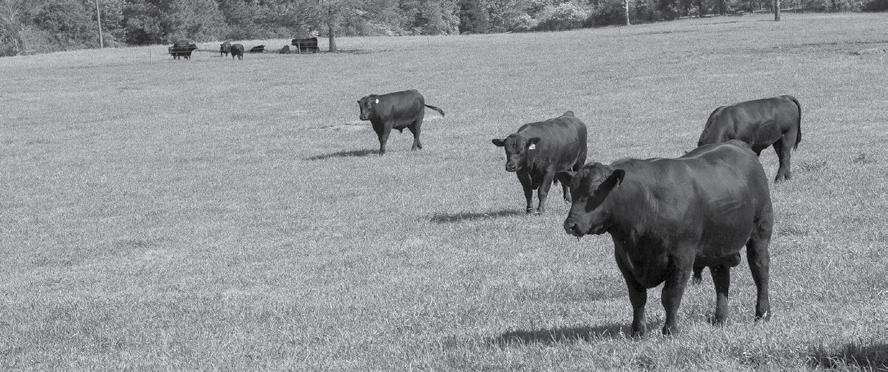
4 minute read
Ryan Quarles: Vet Shortage Puts Animal Welfare in Jeopardy
Ryan Quarles Commissioner of Agriculture
Large animal veterinarians are essential to protect our nation’s food supply from foreign animal diseases, such as bird flu, African Swine Fever, and foot and mouth disease. Of the 1,695 veterinarians in Kentucky, only 3 percent (54) are offering full-time service to our livestock, such as cattle, sheep, goats, and pigs. The impact of this shortage on farmers and our food system in Kentucky and throughout the country was the primary focus of two industry stakeholders meetings the Kentucky Department of Agriculture (KDA) hosted in the fall and summer of 2022. It’s our hope that by bringing industry stakeholders together, we can find solutions to the issues at hand and restore the service farmers need.
Nationwide, a shortage of large animal veterinarians is impacting farmers as they begin to experience veterinary care without the timely service they’ve had in the past. The numbers are a little better than Kentucky, but only 5 percent of the nation’s vets practice on large animals. The other 95 percent have turned to research or small animal practices. There are a number of factors behind the shortage of large animal veterinarians, including: • Salaries – They make less on average than those in private small animal practices.
The average salary for a first-year small animal veterinarian is nearly $97,000, while an equine vet will average about $40,000 less. • Debt load – The average debt for a graduating veterinarian is around $218,000. With a 10-year repayment schedule, that equates to around $3,000 a month.
• Burnout – Long work hours, strenuous work, and unpredictable schedules have driven many large animal veterinarians
from the field. Instead, many are opting to find work in small animal practices that offer a fixed schedule, less physically demanding environment, and more pay. • Workplace injuries – Over a 30-year working life, an equine veterinarian can expect to sustain seven to eight workplace injuries. Forty-four percent require time off work to recover, and 23 percent require hospital treatment. • Retirements – Almost 40 percent of the large animal veterinarians in Kentucky are within 10 years of retirement. KDA identified four programs that may be beneficial in helping to resolve the vet shortage, including: 1. The Large Food Animal Veterinary Loan
Program (VET), offered by the Kentucky
Agricultural Finance Corp., helps individuals licensed to practice veterinary medicine in Kentucky to construct, expand, equip, or buy into a practice serving large/food animal producers, including goats, sheep, swine, and other smaller food animals.
2. The Large and Food Animal Veterinary
Incentives Program, offered by the
Kentucky Agricultural Development
Board, provides funding for Kentucky veterinarians to increase service to large and food animals in the state.
Applicants may receive up to 75 percent reimbursement for eligible expenditures not to exceed more than $100,000 in state and county funds as a lifetime limit. 3. The Veterinary Medicine Loan Repayment
Program is offered by the U.S. Department of Agriculture’s National Institute of Food and Agriculture for qualified veterinarians who are working in the food animal field.
The program provides up to $75,000 in loan repayment over a three-year period to help offset a significant portion of the debt incurred in pursuit of veterinary medical degrees in return for service in certain high-priority veterinary shortage situations. Kentucky identifies the area of the state where qualified applicants are needed.
4. In recent years, Auburn University’s preceptorship program was funded by a federal grant that placed veterinary students into a Kentucky rural practice.
Of the 20 students who were placed in
Kentucky practices during their studies, 15 are coming back to the state to begin their careers. Currently, there is a search to find a source of funding to continue this program. The shortage of large animal veterinarians is a serious issue, not only in Kentucky but nationwide. Without the ability to get the adequate animal care that farmers need to keep their herds and flocks healthy, this shortage is putting their welfare in jeopardy.
Graham Good Deals
-Log Cabin Siding Wood & Vinyl -1x6 & 1x8 T&G Knotty Pine -2x6 T&G SYP & Treated -6” & 8” Cedar Bevel Siding -Framing & Treated Lumber
-Rebar & Concrete Wire -Fence Post & Fence boards -Wood Barn Siding -Used Guardrail -20’ & 40’ Used Cargo Containers OUR DIRT CHEAP PRICES ARE POSTED ON OUR WEBSITE
OR CALL FOR A DELIVERED PRICE TO YOUR LOCATION A.W. GRAHAM LUMBER LLC
Power of Angus.
Alex Tolbert,
Regional Manager
Kentucky Ohio Tennessee
A reliable business partner is difficult to come by. Contact Alex Tolbert to locate Angus genetics, select marketing options tailored to your needs, and to access American Angus Association® programs and services. Put the business breed to work for you.
Contact Regional Manager Alex Tolbert: Cell: 706-338-8733 atolbert@angus.org
3201 Frederick Ave. | St. Joseph, MO 64506 816.383.5100 | www.ANGUS.org
NEED A GOOD ANGUS BULL?
WE HAVE ONE FOR YOU.
Bridgeview Angus Bulls For Sale
50 REGISTERED ANGUS BULLS:
18 MONTHS OLD, BSE CHECKED • LOW BIRTH WEIGHT HEIFER ACCEPTABLE WITH EXPLOSIVE GROWTH
HERE IS A SAMPLE OF BRIDGEVIEW ANGUS BULLS OFFERED PRIVATE TREATY
All bulls subject to first 90 day breeding season guarantee!
TATTOO CED
115 10
119 9
127 11
134 138 140 142 144 145 147 13 7 10 10 10 10 14
150 151 11 13
BW
WW
68 66 69 76 75 78 63 74 91 76 78 66
YW AI SIRED
132 REGIMENT 121 TRUE NORTH 124 KANSAS 135 ASHLAND 133 PATRIARCH 141 BLACK ONYX 112 ALTERNATIVE 132 KANSAS 164 REGIMENT 128 RAWHIDE 142 FIREBALL 114 UNIQUE










